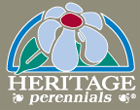Aster divaricatus
White Wood Aster |
USDA Zone: 4-9 |
Plant number: 1.085.840
Unlike most other species of Fall Aster, this one is suitable for shady sites. A North American native wildflower, this grows well under shrubs and at the edge of woodland gardens. It forms a low mound of crispy-looking bright green leaves, bearing upright stems of small white, red-eyed daisies, held on black stems. Also tolerates sunny locations, and will naturalize well in the woodland or meadow garden. Although not yet widely grown, this species deserves much wider use in North American gardens.
Further details for
Aster divaricatus
Optimal Growing Conditions
Sun Exposure
Soil Type
Soil pH
Soil Moisture
Care Level
Appearance and Characteristics
Flower Colour
Blooming Time
Foliage Color
Plant Uses & Characteristics
Flower Head Size
Height 45-60 cm 18-23 inches
Spread 45-60 cm 18-23 inches
Foot Traffic
Growth Rate
Disclaimer: This information is presented for reference only. This plant is not currently part of our Heritage Perennials lineup.
|






